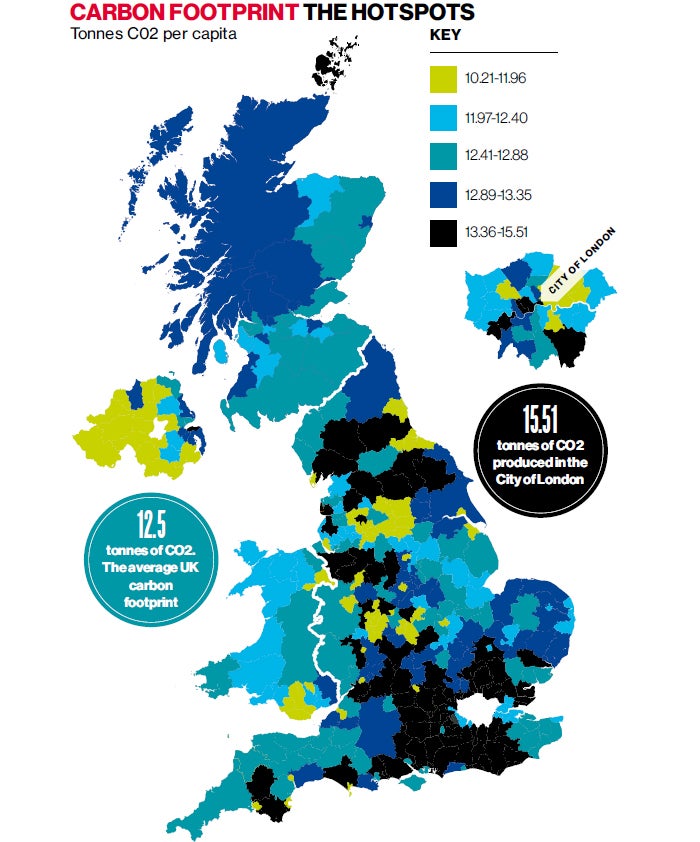Newham: The borough that’s Britain’s greenest – without any effort by its residents
Tom Bawden visits urban, impoverished Newham to find out from its residents why it has the lowest carbon footprint in Britain

Serving fruit and veg from his store at Stratford Indoor Market yesterday, Joe Harvey is surprised to learn that the surrounding borough of Newham has just been named the greenest part of the UK.
“I’ve lived here all my life and been working at this market since I was 11, but not once have I heard anybody being concerned about the environment,” said 23-year-old Mr Harvey.
“I suppose it does make sense though because there is not a lot of money in Newham, everything is on your doorstep and buses come here from all around,” he added.
Mr Harvey estimates that about 90 per cent of his customers use public transport, in some cases because it is more convenient and, in others, because they can’t afford a car.
“They don’t do it for the environment but it helps,” he says.
A few stores down, at a florist and London memorabilia outlet, Sareena Hamid echoes his sentiment. “People don’t seem particularly environmentally-friendly around here. I think it’s more to do with funds. No one has mentioned the environment or asked whether products are made from recycled materials,” she says.
However, new research published today in the journal 'Environmental Research Letters' has found that the carbon footprint of the average Newham resident is the lowest of any municipality in the country. The footprint – defined as the total amount of carbon dioxide emitted into the atmosphere as a result of the goods and services used – comes to 10.21 tonnes of CO2 a year. It includes emissions generated by the manufacture and transport of products such as iPhones, even if they have been made abroad.
Newham’s footprint is 18 per cent below the national average of 12.5 tonnes and a third less than the 15.51 tonnes emitted in the area with the highest carbon footprint – the City of London.
The research, from the Potsdam Institute for Climate Impact Research, showed a strong correlation between the amount people earned and their carbon footprint, with each additional £600 in weekly income resulting in an extra tonne of annual C02 emissions.
The carbon footprint is also correlated to car ownership, partly because private vehicles produce more emissions per capita than public transport and also because car ownership “is likely to capture broader aspects of lifestyles”, the report noted.
The report also found that, everything else being equal, the more educated a person the greater their carbon footprint will be, although it could not say why this was.
House-size was the other main determinant of people’s carbon footprint, with emissons per head falling as household size increases and relative energy bills declined.
But if The Independent’s trip to Newham is anything to go by, income is by far the biggest determinant of carbon footprint.
“Newham is the most diverse community, not only in England but in the world and there are high numbers of refugees and asylum seekers. So environmental concerns are very much secondary concerns to survival,” said David Richards, vicar of St John’s church in Stratford.
“These concerns are quite a white, middle-class thing because they have more money to spend on green issues,” he added, pointing out that organic markets and other manifestations of environmental living are more likely to be found down the road in Forest Gate.
Howard Sivills, a white, middle-class performance artist, concurs. “I’m quite green minded, but I’m in the minority. I travel everywhere on public transport or cycle, I recycle and generally do what I can. I’m not too extreme – I’ve got a normal toilet, but I think everyone has to make an effort.”
Mr Sivills was born in Newham, spent most of his life in Devon, and has recently returned to the borough.
“Most of my family that lives here hasn’t thought much about the environment, it’s not an immediate pressure. It is an incredibly bourgeois luxury to care about the environment. Most people are too busy living and surviving to think about the environment. They are too busy being skint,” he added.
Just five miles to the south east of Newham - one of the poorest boroughs in the UK - lies London’s financial district, one of the wealthiest, and the one with the highest footprint.
Subscribe to Independent Premium to bookmark this article
Want to bookmark your favourite articles and stories to read or reference later? Start your Independent Premium subscription today.

Join our commenting forum
Join thought-provoking conversations, follow other Independent readers and see their replies